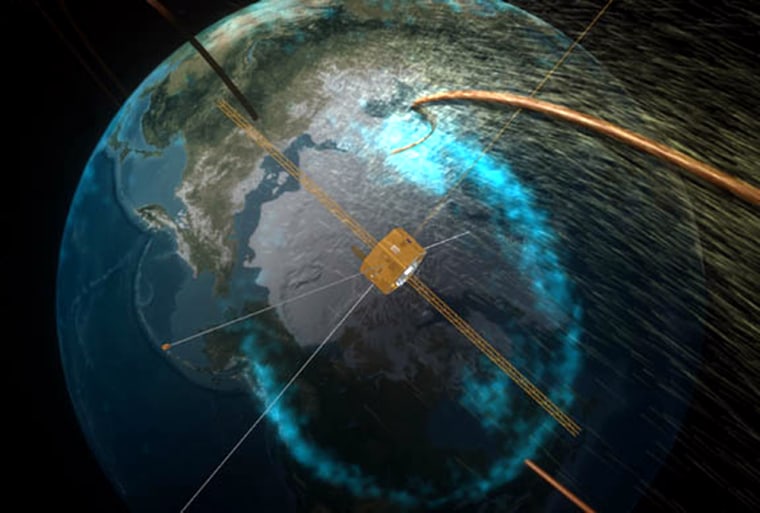A NASA satellite studying Earth's magnetic field has stopped operating after six years, the space agency said Friday.
The Image satellite, launched in 2000, successfully completed its two-year primary mission. It continued to make observations until last month when engineers discovered that its power supply had failed. The satellite remains in orbit around the sun and does not pose a threat to Earth.
Image — short for Imager for Magnetopause-to-Aurora Global Exploration — was the first space probe to study the entire magnetosphere, an invisible field that extends for thousands of miles beyond Earth.
The region is where space weather activity takes place. It occurs as high-energy particles from the sun interact with Earth's magnetism. That interaction sometimes causes shimmering auroras or satellite-damaging radiation.
Understanding how the magnetosphere responds to energy from solar wind has become increasingly important to scientists because such activity can disrupt satellites, endanger astronauts and even shut down power systems on Earth.
During Image's mission, it beamed back dozens of images, including the first global view of a double aurora.
The $154 million Image satellite was managed by NASA's Goddard Space Flight Center in Greenbelt, Md.
